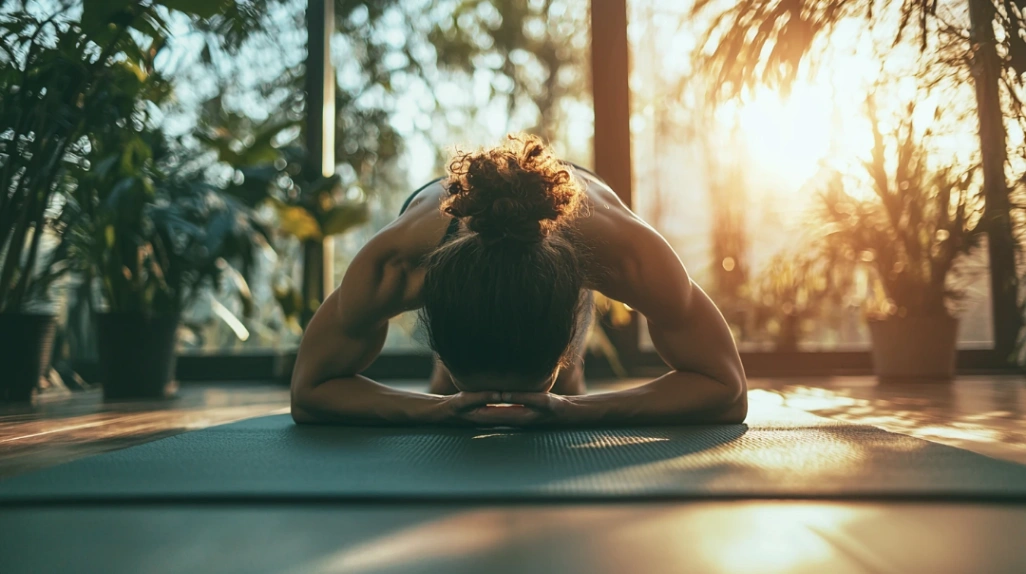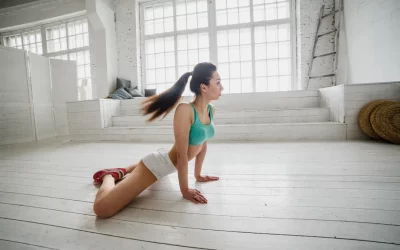Neck and shoulder tension can leave you feeling drained, making it difficult to focus, move freely, or maintain good posture throughout the day. The trapezius muscle, which spans across your neck and shoulders, plays a pivotal role in your upper body’s mobility and comfort—especially for those who spend long hours at a desk or carry stress in their shoulders. When your traps become tight, it can lead to stiffness, discomfort, and even poor alignment over time.
In this article, we’ll explore a range of effective trapezius stretches designed to help you regain flexibility, improve posture, and feel more relaxed in your everyday movements.
Benefits of Trapezius Stretching
Stretching the trapezius muscles is essential for improving posture and enhancing flexibility. These muscles, which span the neck, shoulders, and upper back, play a key role in maintaining proper alignment and mobility. When tight or overworked, they can pull the shoulders forward, leading to tension in the neck and poor posture.
Regular stretching helps release muscle tightness, allowing the shoulders to sit naturally and promoting spinal alignment, making it easier to maintain a straight back. This is especially beneficial for those who spend long hours sitting or looking at screens, helping to counteract slouching and forward head posture.
Stretching can relieve discomfort from tension and stiffness, reduce stress, and improve blood flow. Over time, it supports muscle health, prevents pain, and reduces the risk of injury from muscle imbalances.
“Personally, I’ve noticed that improving flexibility in my trapezius really helps with my neck, shoulder, and upper back mobility. It’s made everyday movements feel so much smoother—whether it’s turning my head, reaching up, or even just sitting for long periods without feeling stiff. It’s been a game changer.”
Best Trapezius Stretches to Improve Posture and Flexibility
 1. Upper Trapezius Stretch (Neck Tilt Stretch)
1. Upper Trapezius Stretch (Neck Tilt Stretch)
The upper trapezius muscles often carry tension, especially from prolonged sitting or screen use. Stretching these muscles helps relieve stiffness, improve posture, and enhance mobility in the upper body.
How to Perform the Stretch:
-
Sit or stand with a straight back and relaxed shoulders.
-
Let your arms hang naturally by your sides.
-
Slowly tilt your head to one side, bringing your ear toward your shoulder.
-
Place your opposite hand on the side of your head and apply gentle pressure to deepen the stretch.
-
Hold the position for up to 30 seconds, then switch sides.
2. Forward Neck Stretch
The Forward Neck Stretch helps alleviate tightness in the trapezius and neck area, particularly from long hours of sitting or screen use. This simple stretch can reduce stiffness and improve mobility in the upper back and shoulders.
How to Perform the Stretch:
-
Sit or stand with a straight back and relaxed shoulders.
-
Tuck your chin slightly toward your chest to begin the stretch.
-
Place one hand on the back of your head to assist gently.
-
Apply light pressure to guide your head forward, increasing the stretch in your neck and upper trapezius.
-
Hold for up to 30 seconds, ensuring slow, controlled movements.
-
Return to a neutral position and repeat if needed.
3. Shoulder Shrug Stretch
The Shoulder Shrug Stretch is an effective and easy way to release tension in the trapezius muscles and enhance mobility. It’s simple to perform and can be done anywhere, making it a great addition to your daily routine.
How to Perform the Stretch:
-
Stand or sit with a straight back and relaxed shoulders.
-
Lift both shoulders toward your ears as high as possible.
-
Hold for a few seconds, feeling the engagement in the trapezius muscles.
-
Slowly lower your shoulders back down in a controlled manner.
-
Repeat up to 10 times, focusing on smooth and controlled movements.
4. Cross-Body Arm Stretch (Middle Trapezius Stretch)
Since the middle trapezius stabilizes the shoulder blades and supports good posture, stretching it helps reduce discomfort and restore movement when stiffness occurs.
How to Perform the Stretch:
-
Extend one arm straight across your chest.
-
Use the opposite hand to gently pull the arm closer to your body, just above the elbow.
-
Keep your shoulders relaxed and level, avoiding any shrugging.
-
Hold the position for up to 30 seconds, feeling a stretch between your shoulder blades.
-
Switch sides and repeat.
5. Wall Lean Stretch (Lower Trapezius Stretch)
The Wall Lean Stretch helps improve shoulder stability and reduce stiffness in the upper back.
How to Perform the Stretch:
-
Stand facing a wall with your hands placed shoulder-width apart at chest height.
-
Step back slightly, keeping your feet hip-width apart.
-
Lean forward while keeping your back straight, allowing your chest to move toward the wall.
-
Press your hands into the wall and gently engage your shoulder blades, focusing on the lower trapezius.
-
Hold the stretch for up to 30 seconds, then slowly return to an upright position.
To further enhance your trapezius stretching routine and support long-term posture improvement, incorporating the right tools can make a significant difference. Consider exploring options like those offered by WeStretch to help you stretch more effectively and maintain better flexibility with ease.
Tips for Effective Trapezius Stretching
To maximize the benefits of trapezius stretching, keep these key points in mind:
-
Use Proper Form – Incorrect stretching can lead to strain or limit effectiveness.
-
Move Gradually – Avoid sudden or jerky motions; ease into each stretch.
-
Apply Gentle Pressure – Overstretching can cause discomfort or injury; aim for mild tension, not pain.
-
Be Consistent – Regular stretching improves flexibility and reduces tightness.
-
Hold Each Stretch – Maintain positions for 30 seconds to allow muscles to relax.
-
Incorporate Deep Breathing – Helps release tension and enhances flexibility.
-
Maintain Good Posture – A neutral spine ensures the stretch targets the right muscles.
Exercise Smarter with WeStretch: Your All-in-One Stretching Assistant
A consistent full-body stretching routine is essential for improving flexibility, supporting injury prevention, and enhancing overall well-being. Carefully following simple yet effective stretches targeting the hamstrings, hip flexors, back, quads, chest, and shoulders, individuals of any fitness level can reap the benefits.
Regular stretching, with attention to proper form and consistency, can help you move more freely, recover faster, and feel better in everyday activities.
Looking for a way to add some fun to your stretching routine? Check out WeStretch—an app that’s like your own personal stretch coach! With tailored plans, easy-to-follow demos, and progress tracking, it’s got everything you need to keep you limber and on point. Ready to get flexible? Sign up today and let’s get stretching!
 FAQ
FAQ
How do you loosen up a tight trapezius?
To loosen a tight trapezius, try gentle stretches like the neck tilt—drop your ear toward your shoulder and hold for 30 seconds on each side.
How do you stretch your trapezius muscle?
To stretch your trapezius, try a simple neck stretch: Sit or stand tall, tilt your head to one side, bringing your ear toward your shoulder, and gently apply pressure with your hand for a deeper stretch.
How do you release a trapped trapezius?
To release a tight trapezius, try gentle stretches like neck tilts, shoulder rolls, and ear-to-shoulder stretches. Massage, foam rolling, and applying heat can help relax the muscles.
How to relieve knots in the trapezius?
To relieve knots in the trapezius, try gentle stretches like ear-to-shoulder neck tilts, chin tucks, and shoulder rolls.
What are the benefits of trapezius stretches?
Trapezius stretches help relieve tension, improve posture, and improve flexibility. They reduce stiffness, ease neck and shoulder pain, and promote better blood circulation.






